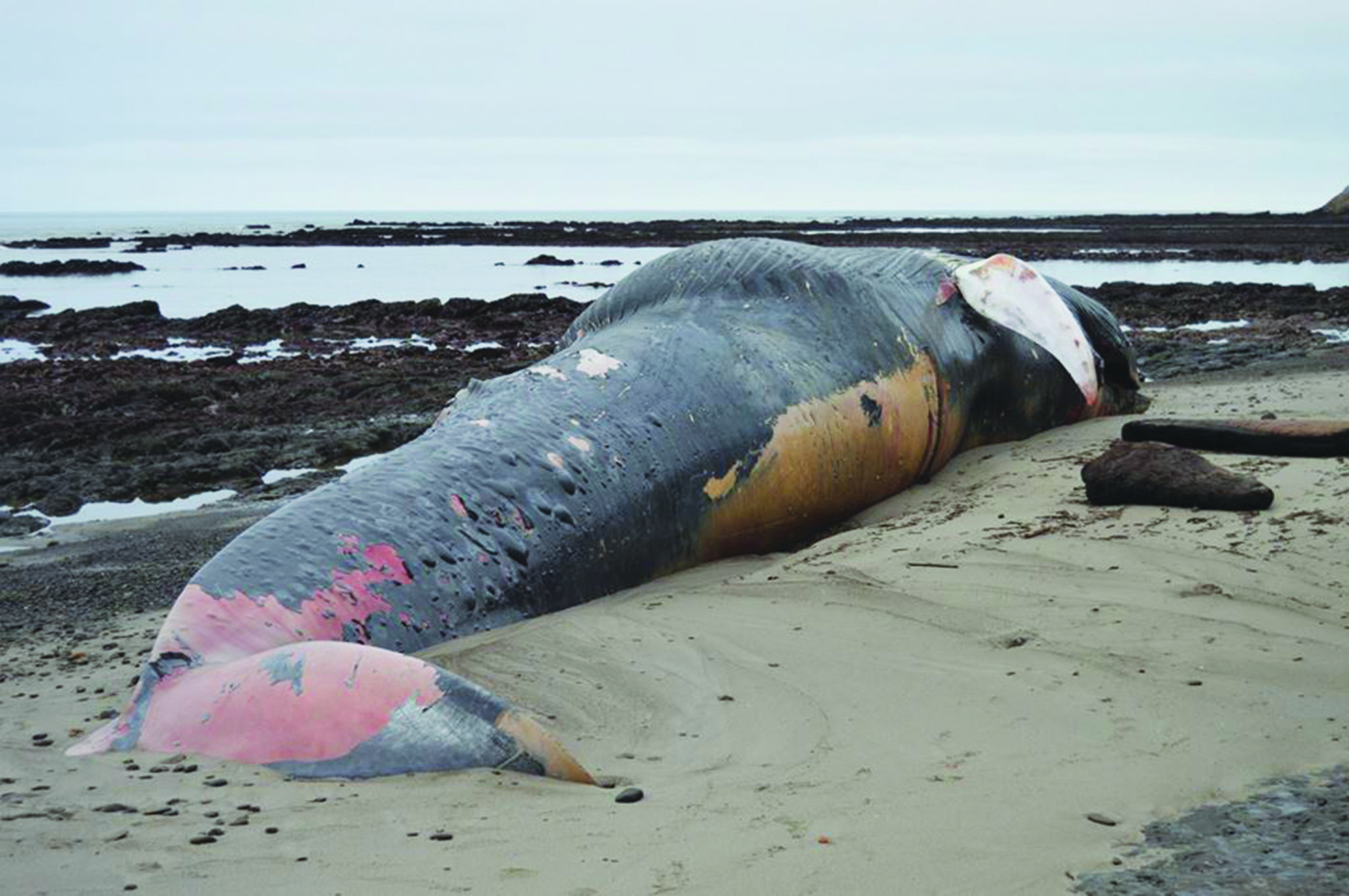By Tom Gogola
The big news of Memorial Day weekend in Marin was of course, the whale—the big, 79-foot endangered female blue whale that got hit by a ship out in the shipping channels and washed up on Agate Beach in Bolinas late last week—and died.
It was a truly sad and awesome scene on the beach through the weekend as visitors and scientists came to see the majestic animal, pray over it, take samples for scientific study or simply stand next to the animal and be dwarfed by its enormity of scale and decaying beauty.
On a gray Saturday morning at dawn the whale was still intact, sans its eyes, which had been removed by scientists the day before. Word on the whale-watch street is that it is very rare luck indeed to get the eyes of a dead whale before the birds and scavengers peck them out. The beach was empty save for a few other early-morning visitors. A couple of women from San Rafael had made the trek after reading that, owing to strong minus-tides through the weekend, the Duxbury Reef beach walk had been named the “Hike of the Week” in a local daily paper.
The women had no idea about the whale until they arrived; the greater Bay Area media was still just getting up to speed on the story.
“I thought it was a metal sculpture on the beach,” one woman said. The coloration of the whale changed through the weekend and for a while the blistering skin would give way and leave rust-brown circles on the mammoth body that did lend to an ancient, sculptural feeling.
The report that came from scientists at the Sausalito-based Marine Mammal Center, located in the Marin Headlands, was that the whale was around 20 years old, a little small for her age, had given birth to a couple of calves over her lifetime and had been known to regional scientists since around 1999.
There are around 2,800 blue whales off of San Francisco out of a world-wide population of around 10,000—one less after the collision with a vessel that did all sorts of internal damage to the whale and killed it.
Commercial vessels running through the federally-protected Gulf of the Farallones are asked to reduce speed to 10 knots to avoid such encounters or limit the damage when they do occur (to whales and ships alike, but the whales generally absorb the brunt of it).
By 9am on Saturday morning, the parking lot at Agate Beach was full, and the beach was filled with visitors and scientists, the latter of whom had come to perform a proper necropsy and take tissue samples back to the lab, and filled the back of a pickup truck with black plastic bags of whale. To describe the rank aroma coming off of the whale is somewhat difficult without stink-shaming the poor departed beast, but it was and is some kind of powerful and sour smell, and enduring in the nostrils for hours after an encounter with it. Fortunately, the spring has brought a stunning bounty of pink and white roses to offset the pungency of rotting whale blubber, and the whale was itself garlanded with a few flowers by mourners.
By the end of the weekend many visitors were viewing the whale from atop a cliff, and the whale was itself looking rather beat up. The de riguer jokes about whale-burgers popping up on the local Coast Cafe menu, very authentic local seafood chow, foraged with integrity, had run their course.
The blue whale is the largest animal in the world, and indeed if we are to believe Wikipedia, is the largest animal ever to have swam or roamed the earth—and that includes all of those big dinosaurs.
The relatively rare whale wash-up recalled an incident from 1970 that was contemplated at and around the various community events and good-time Memorial Day activities taking place through the weekend in Bolinas, with a certain flavor of head-shaking mirth at the retell. The story was recalled over the question of, What is to be done with the whale, which began to manifest in the local chew-the-blubber circuits at Smiley’s Saloon and elsewhere.
Well, when a big sperm whale washed up in Oregon in the 1970s, in the coastal town of Florence, state officials consulted with the Navy and decided to blow it up, and left it to a local to do the deed. As recounted in Wikipedia and in Dave Barry’s hilarious retell of the event, a military veteran with explosives experience warned the local engineer that he’d packed way too much dynamite under the whale. Way too much.
Kaboom! The Oregonians set off the dynamite, a large explosion was caught on camera, and then large chunks of whale subsequently began to rain down on passersby and TV film crews, crushed a car or two, almost killed a couple of people, and didn’t even blow up the darn whale. It also scared away all of the scavenger birds that were supposed to help break down the remains. It’s a YouTube classic—just look up “exploding whale.”
Rest assured, the Bolinas whale is not going anywhere and nobody is going to blow it up. The whale is presently lodged in a curving corner of the beach, part of a county park that connects to the Point Reyes National Seashore, and it’s way too rocky for any craft to get in there and tow it out to sea. The beach is itself too rocky to bury the whale in the sand, the preferred course of action in these cases.
It’ll be a long and stinky summer on Agate Beach as locals now turn their attention, and their general disdain, at state and federal laws that forbid, in almost all cases, the harvesting of whale bones for personal or commercial ends.











